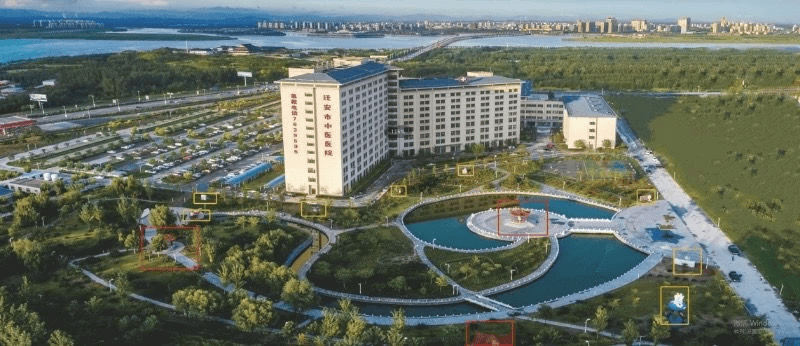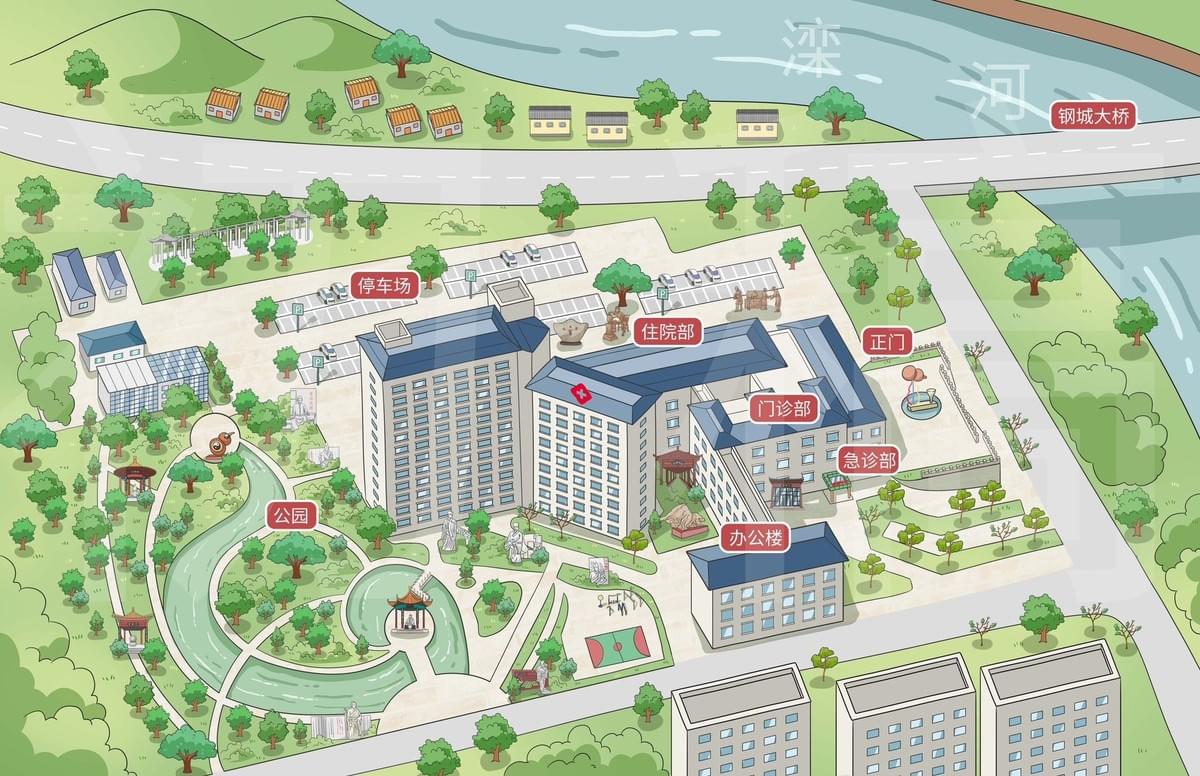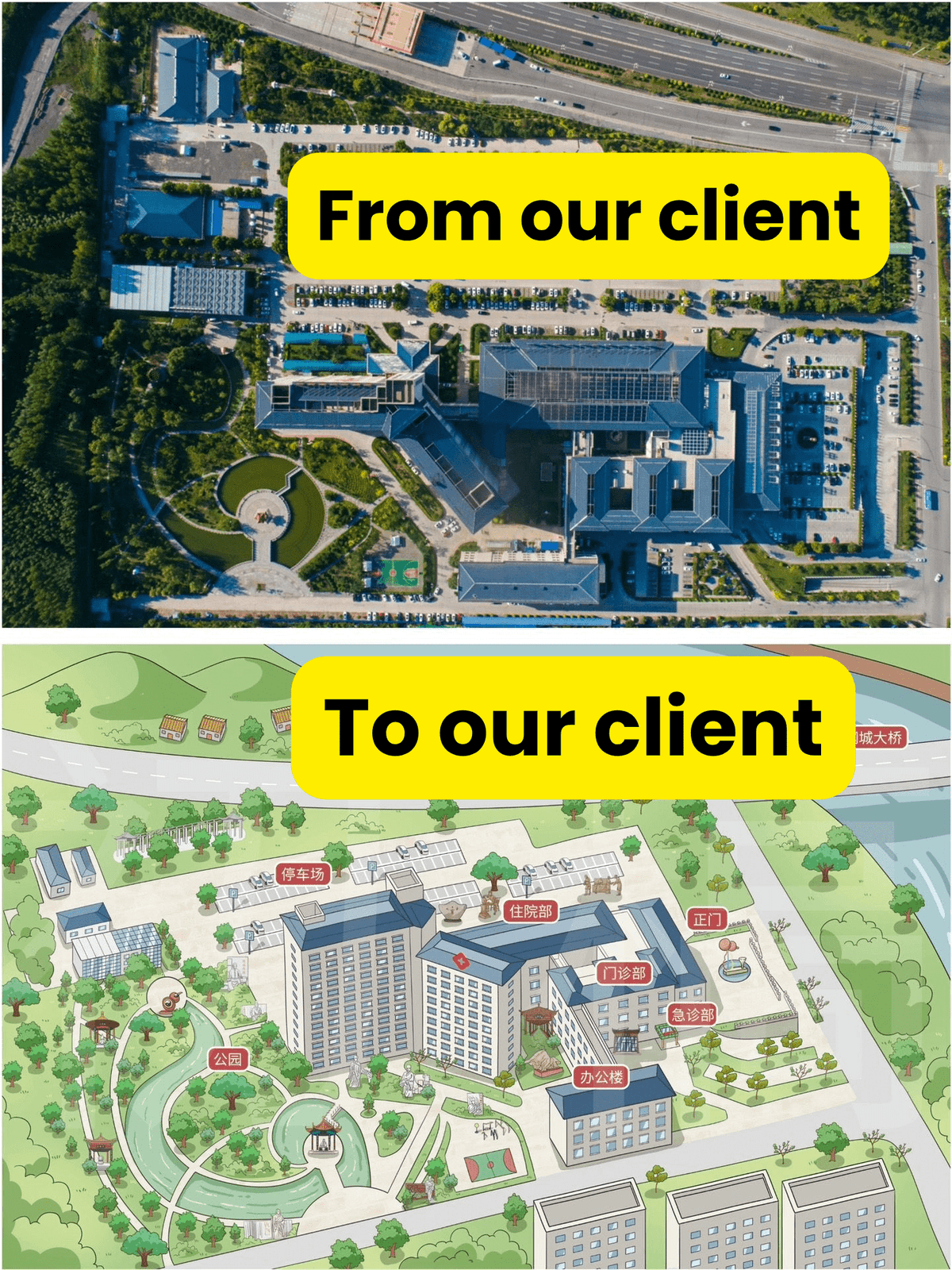In an era of GPS and digital navigation, there's something uniquely engaging about a beautifully illustrated map. When it comes to navigating complex spaces like hospitals, where visitors often arrive stressed and disoriented, a thoughtfully designed wayfinding tool can make all the difference. The team at Mapful.art recently demonstrated this through their stunning hand-drawn map of Luanhe Hospital (滦河医院), creating not just a functional guide but a visual story of the campus.
The Challenge of Hospital Navigation
Hospitals can be intimidating and confusing environments. With multiple buildings, departments, and specialized areas, visitors often struggle to find their way—especially in moments of urgency or anxiety. Luanhe Hospital faced this common challenge and sought a solution that would be both practical and approachable.
Standard hospital maps often fall short—either too clinical and complex or too simplified to be truly useful. This is where the artistry of Mapful.art entered the picture, offering a fresh approach to an age-old problem.
From Consultation to Concept: The Initial Stages
The journey of creating Luanhe Hospital's map began with thorough groundwork:
Initial Consultation
The Mapful.art team first met with hospital administrators to understand their specific needs. They discussed pain points in visitor navigation, identified priority areas that needed emphasis (like the Emergency Department), and established the tone the hospital wanted to convey—professional yet welcoming.
Information Gathering
Creating an accurate yet appealing map required comprehensive data collection:
- Satellite imagery of the campus and surrounding areas
- Architectural floor plans of all buildings
- Department locations and their relationships to one another
- Access routes, entrances, and parking facilities
- Natural features like the Luanhe River that provide geographical context
This research phase was crucial for balancing visual appeal with navigational accuracy—a hallmark of effective wayfinding design.
The Artist's Perspective: Design Choices That Make a Difference
Bird's-Eye View With a Twist
Rather than opting for a flat, conventional map view, the team chose an aerial perspective that slightly exaggerates the three-dimensionality of buildings. This approach helps visitors more easily recognize structures while maintaining clarity of the overall layout.
Color Psychology in Healthcare Settings
The color palette wasn't chosen merely for aesthetic appeal. The soft blues and greens dominating the landscape create a sense of calm, while important facilities stand out with distinct yet harmonious colors. The red backgrounds for labels ensure visibility without creating visual tension.
Balancing Detail and Clarity
One of the most challenging aspects of hospital map design is determining how much detail to include. Too little, and the map loses usefulness; too much, and it becomes overwhelming. The Mapful.art team struck an elegant balance—including essential landmarks like:
- Clearly distinguished main buildings (Emergency, Outpatient, and Inpatient Departments)
- Administrative buildings
- Multiple parking areas
- The therapeutic garden with walking paths
- The iconic steel bridge over Luanhe River
- Surrounding neighborhoods for broader context
The Technical Execution
Creating this type of specialized illustration requires both artistic talent and technical expertise:
From Rough Sketch to Refined Illustration
The process began with conceptual sketches that established the basic layout and perspective. These initial drawings were refined through several iterations, with each version adding more detail and precision.
Digital Tools and Techniques
While maintaining the charm of hand-drawing, the final execution likely involved digital illustration tools that allowed for:
- Precise scaling and proportions
- Consistent application of the color scheme
- Clear typography for bilingual labeling
- Easy revisions based on stakeholder feedback
The Review Process
Before finalization, the map underwent careful review by hospital stakeholders to ensure accuracy of building placements, department locations, and appropriate emphasis on critical areas. This collaboration between artists and healthcare professionals was essential to creating a map that's not just beautiful but functional.
The Impact: More Than Just a Map
The finished product serves multiple purposes for Luanhe Hospital:
Improved Patient Experience
By reducing navigation stress, the map contributes to a better overall patient experience from the moment someone arrives at the campus.
Brand Identity
The charming illustration style communicates a hospital that cares about patient comfort and experience—not just medical treatment.
Versatile Application
The digital format allows the map to be used across multiple platforms—from large on-site displays to printed brochures and the hospital website.
Conclusion: Where Art Meets Utility
The Luanhe Hospital map exemplifies how thoughtful design can transform a practical tool into something that engages and delights while still serving its primary purpose. In healthcare environments where stress and anxiety are common, these seemingly small touches—a friendly illustration style, intuitive layout, and careful attention to color and detail—can significantly impact the patient journey.
The Mapful.art team's creation reminds us that even in our digital age, there's enduring value in the art of map-making—especially when it helps people find their way during potentially vulnerable moments. It's a beautiful example of how art and functionality can work together to solve real human problems.



